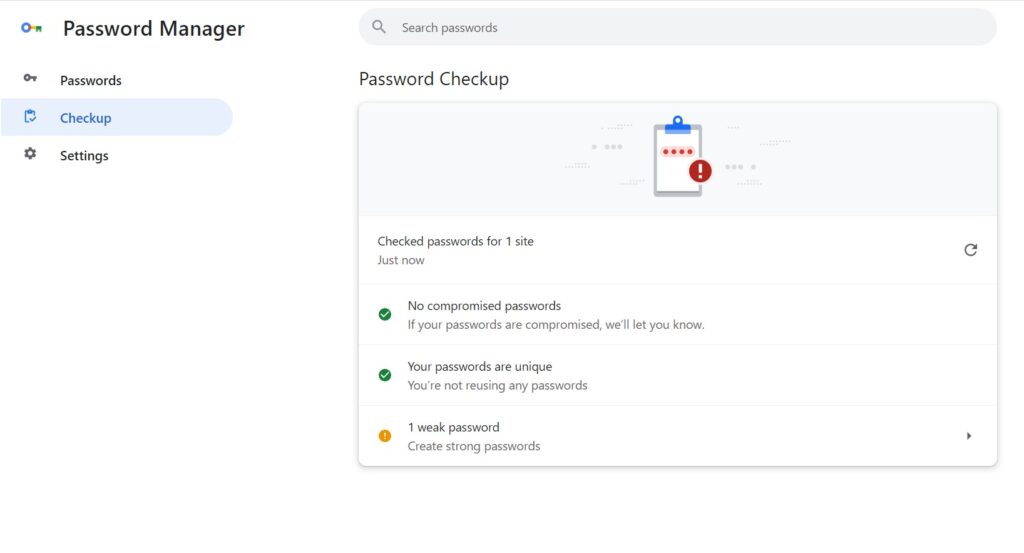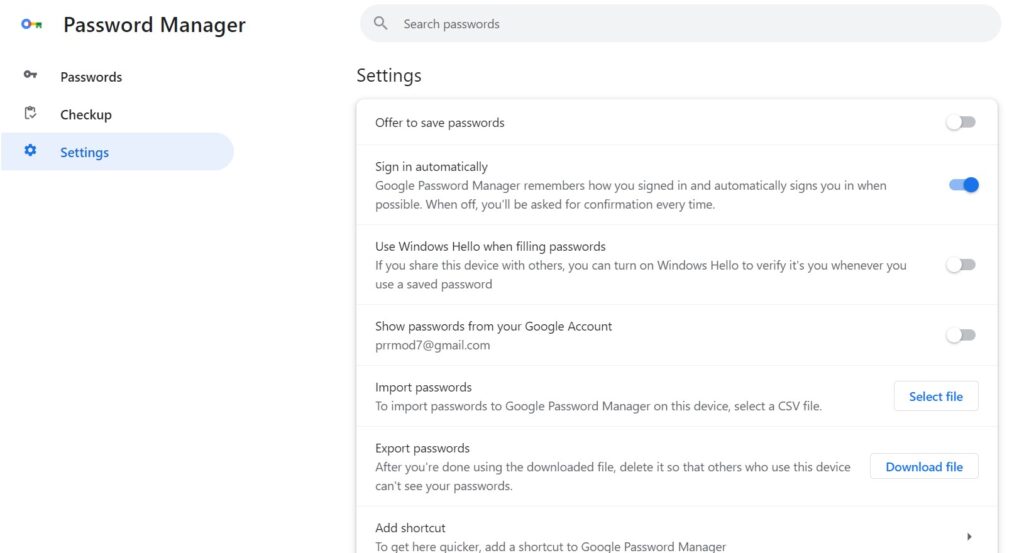Some browsers ship with the password manager utility. Google, like other similar internet browsing software, had the ability to save website login information but it didn’t allow you to manage the same. This latter issue was fixed in one of the Chrome updates released this year. The option to open the “password manager” utility is available on the menu that you see after clicking on the three vertical dots on the Google Chrome’s interface. You can access your entries on the mobile version of the browser as Chrome will automatically sync them when you use it on desktop, and mobile devices.
An entry in the manager comprises these four things – website name, username, passphrase, and a note. The note can be as long as you wish. The website name is nothing but the domain name. For example, Facebook.com, Twitter.com, etc.
Like KeePass, Chrome does not have the ability to generate a passphrase while the user is creating an entry. While registering an account on any website, you can make it generate one. If this feature of the browser “offer to save” is turned on by the user, it will save the phrase as well as the username to its database.

Crome has “checkup” tool built in. This tool identifies and makes you aware of similar, compromised, and weak keyphrases. If a phrase is weak, you can change or delete it from the “Checkup” section itself. The compromised entries are the ones that have been accessed by a hacker or people after it was published on the internet by the hacker. The browser will run this tool when you click on the “CheckUp” option. You can run it manually by clicking the “refresh” icon on the tool’s interface.
Chrome enables you to import data from a CSV file stored on the computer. This file can be generated by other password managers (for example KeePass). The entries are imported within a few seconds. If you don’t like the new feature of Chrome, and you’ve saved login credentials of many websites in the browser, you can export this data with one click of a button. The exported file will be of .csv format. Before creating the same, you will be prompted to enter your Windows login PIN.

Google Chrome supports integration with Windows Hello service. Thereby allowing users to safeguard their passphrase data. This feature is not active by default. When you activate it from the Password Manager settings interface, the browser will ask the user to enter the Windows PIN/passphrase if he/she tries to use a saved login entry. If users don’t have the same, they will not be able to access the entry.
Chrome allows you to create a shortcut to the password manager tool. When you select the shortcut option, the browser will install a Chrome app. The icon of this application is saved on the desktop.
Chrome can autofill sign in information on a website whose name matches the name in its password manager database.
As your website login credentials will be synced across different devices, you don’t have to cut/copy/paste the same.
Is the latest feature of the browser safe? Yes, the password manager supports the “on device encryption” feature. According to Google, this feature turns the computer of the users into a key which will be used to encrypt the login credentials. If you lose the key, you will lose data locked by it. In addition to activating the “windows hello” feature, you should enable “on device encryption” too.
